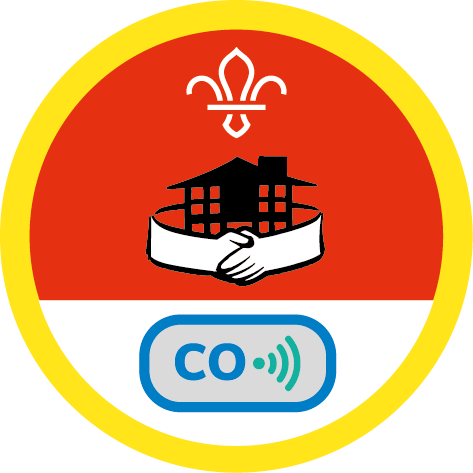Danger zone
You’ll need
- A4 paper
- Scissors
- Sticky tape
- Coloured pens or pencils
- Divide everyone into small teams and hand out the equipment.
- A hazard is something that can be dangerous or cause accidents. Ask each team to design a simple symbol that represents a hazard.
- They need to draw the symbol again a few times so they have at least two for each person.
- Ask them to colour the symbols in, making them as eye-catching as possible, and then cut them out.
- Explain that in teams they should go around and identify the biggest dangers inside the meeting place. These could be hazards such as steps or wires. They should then put a hazard symbol nearby to warn others. Remind them that they should not get too close to any hazards. If they need to, they can draw out extra symbols.
- Once complete or after a set amount of time, ask the teams to prioritise the hazards they have found. They can list them on a piece of paper, putting the most dangerous first.
- Get the teams to think about the dangers and what they could do to prevent or minimise them.
- Get everyone together and go around the meeting place to each hazard that has been identified. For each hazard, choose a team to explain why it is a hazard, what the dangers are and what they can do to prevent the danger and stay safe. If they have missed out any key hazards, go to each one and explain why it is a potential hazard and what can be done to avoid accidents.
- Explain that some hazards they saw today can also be found at home, and there are also others that you wouldn’t find in a meeting place. Ask them to list some hazards that might cause accidents at home. What can they do to prevent accidents from happening? Do they have any safety equipment to help prevent accidents (such as plug covers or baby gates)?
Common accidents in the home can include:
- falls, such as down stairs
- fires from ashtrays or fireplaces
- scalds and burns from cooking
- glass-related accidents from windows or drinking glasses
- poisoning and sickness from detergents or from poor food preparation
Reflection
What should you do if you see a hazard that might cause an accident?
- If it's safe, they could minimise the danger themselves (for example, moving toys that are causing a tripping hazard).
- If it's not safe, they should tell an adult.
- If it's a hazard that can't be removed (such as steps or plug sockets), they should take measures to prevent accidents, such as being careful where they are walking, not having liquids near plug sockets and not touching plug sockets).
Safety
All activities must be safely managed. You must complete a thorough risk assessment and take appropriate steps to reduce risk. Use the safety checklist to help you plan and risk assess your activity. Always get approval for the activity, and have suitable supervision and an InTouch process.
- Scissors
Supervise young people appropriately when they’re using scissors. Store all sharp objects securely, out of the reach of young people.
- Sharp objects
Teach young people how to use sharp objects safely. Supervise them appropriately throughout. Store all sharp objects securely, out of the reach of young people.
Remind young people not to touch the hazards and to be careful when walking around. They should stick the danger symbols near the hazards if it’s not safe to stick them on the hazard directly.
Create some obvious hazards before starting the activity (such as having wires across the floor) to make it easier for young people who might struggle to find the less-obvious or everyday hazards.
To extend the game, get young people to draw a picture of a room in their home and label any potential hazards.
Make it accessible
All Scout activities should be inclusive and accessible.
Ask participants to share their safety tips for avoiding accidents at home, school or outside. Make a poster or infographic for other young people about their top tips.
Ask them to share their findings with their parents or carers. What ways do they prevent accidents happening at home? What else could they do based on some of the things they've learnt?
